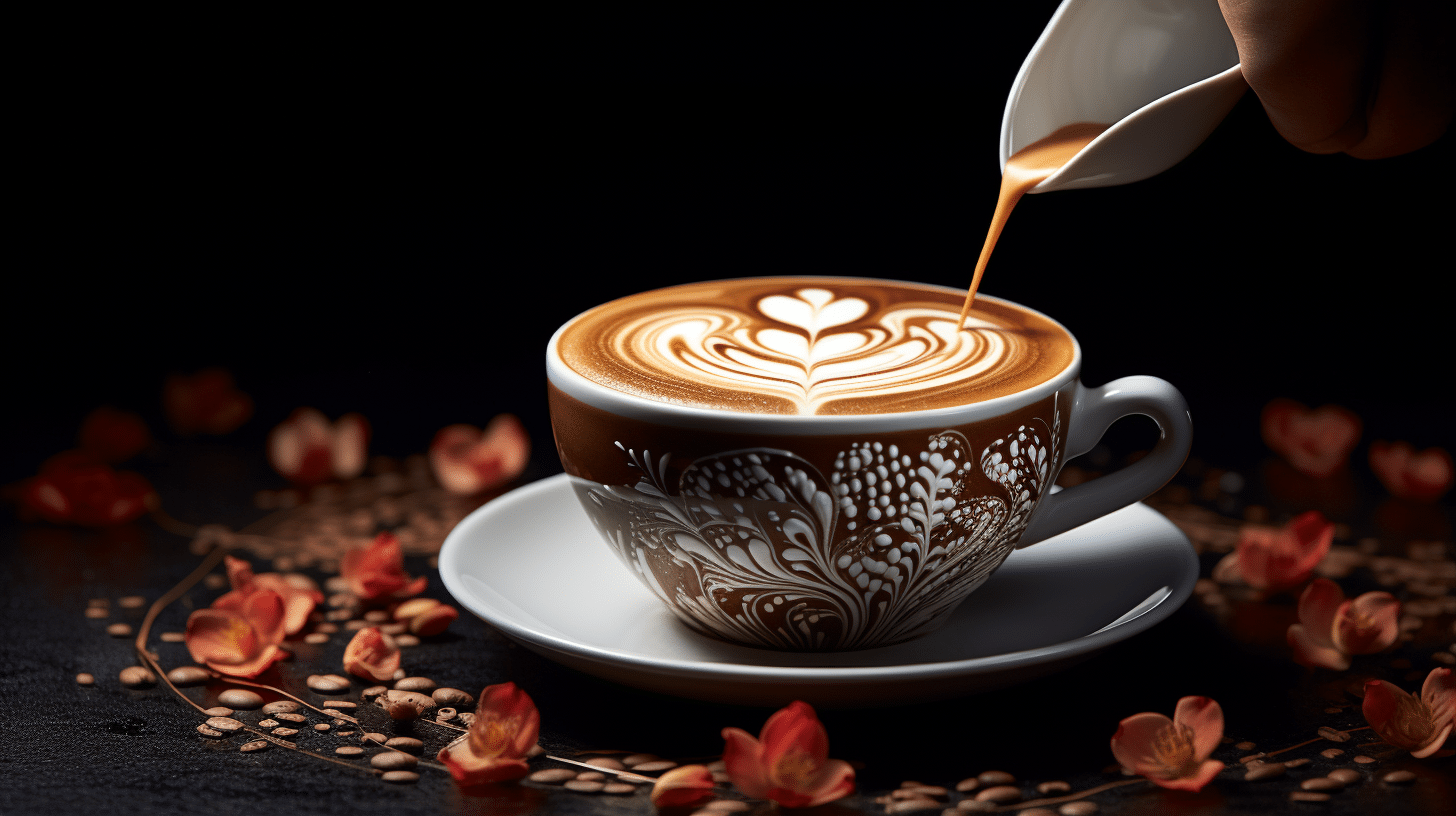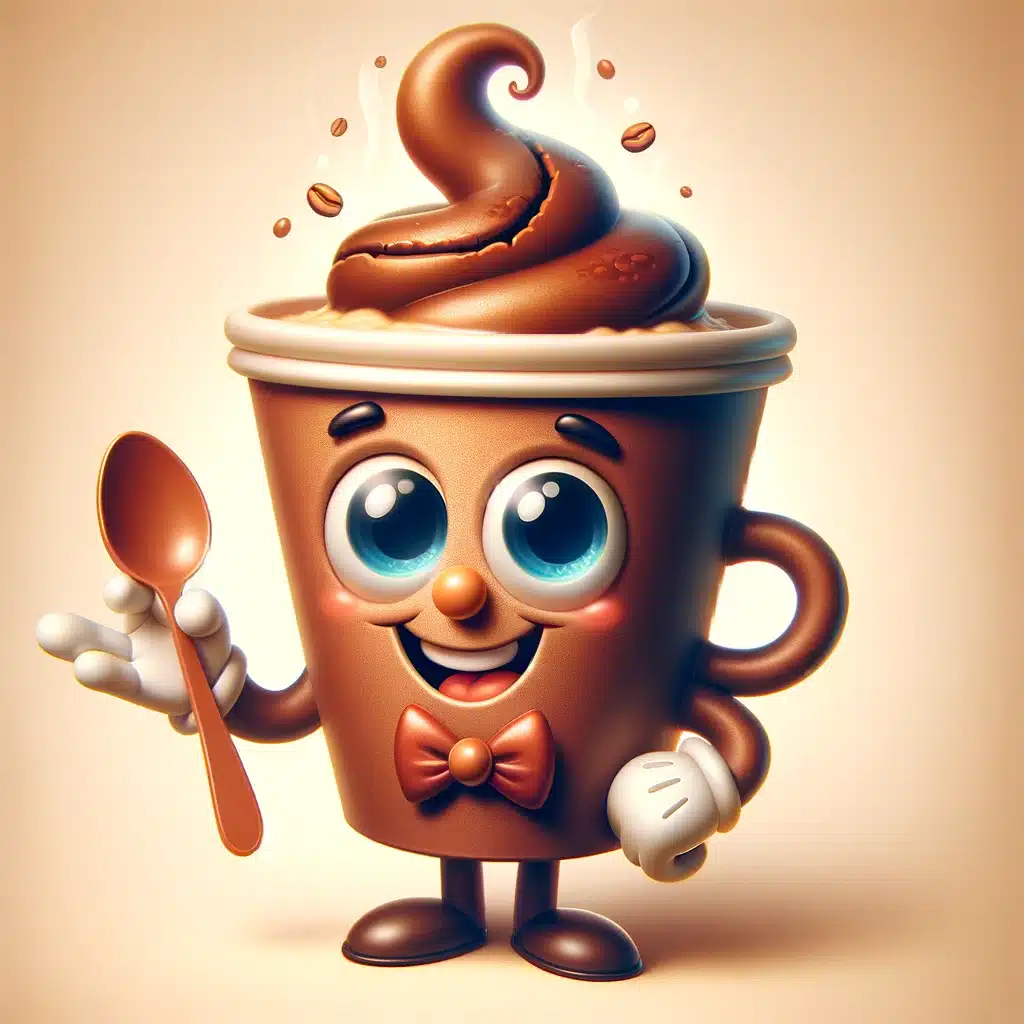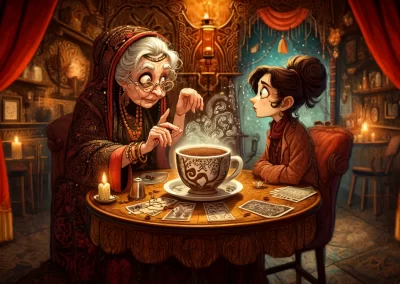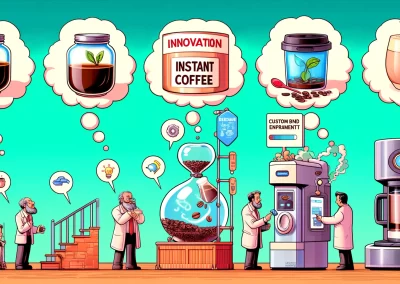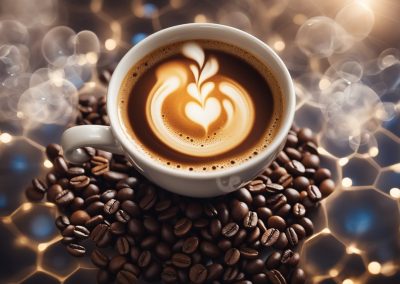Discover The Art of Latte Art. Latte art is more than just a pretty design on top of your morning coffee. It’s an art form that requires skill, practice, and a deep understanding of the science behind it. The process involves pouring steamed milk with microfoam into a shot of espresso, resulting in a pattern or design on the surface of the latte.
To create latte art, the barista must first pull a shot of espresso and steam the milk to the correct temperature and texture. The milk should be steamed until it’s silky and shiny, with a texture that’s similar to wet paint. The barista then pours the milk into the espresso, using various techniques to create designs such as hearts, tulips, and rosettas. The key to successful latte art is to pour the milk slowly and steadily, allowing the milk and espresso to blend together seamlessly.
While latte art may seem like a trendy new addition to the coffee world, it actually has a rich history that dates back to the 1980s. It was popularized by David Schomer, an American barista who developed a unique technique for creating latte art. Since then, latte art has become a staple in coffee shops around the world, with baristas constantly pushing the boundaries of what’s possible. Whether you’re a seasoned barista or a beginner, learning the art of latte art can be a fun and rewarding experience.
The History of Latte Art
Latte art is a form of coffee art that involves creating designs on the surface of a latte using steamed milk. The origins of latte art can be traced back to Italy, where baristas began to experiment with creating designs on cappuccinos and lattes in the early 1900s.
However, it wasn’t until the 1980s and 1990s that latte art began to gain popularity outside of Italy. In the United States, David Schomer, the founder of Espresso Vivace, is credited with popularizing latte art. Schomer developed a technique for steaming milk that created a microfoam with a velvety texture, which allowed baristas to create more intricate designs on the surface of a latte.
Another influential figure in the history of latte art is Luigi Lupi, an Italian barista who began competing in latte art competitions in the early 1990s. Lupi helped to develop the rules and standards for latte art competitions and is considered one of the pioneers of the modern latte art movement.
Today, latte art is a common sight in coffee shops around the world, and many baristas compete in latte art competitions to showcase their skills. The popularity of latte art has also led to an increased interest in coffee culture and the art of espresso-making.
Understanding the Basics
Latte art is a beautiful and intricate art form that requires skill and practice. To create a latte art masterpiece, one must first understand the basics of what goes into making a latte. This section will cover the three main components of a latte: the espresso, the milk, and the foam.
The Espresso
The foundation of any latte is a shot of espresso. An espresso shot is made by forcing hot water through finely ground coffee beans under high pressure. The result is a concentrated, flavorful shot of coffee with a layer of crema on top. The crema is the reddish-brown foam that forms on top of the espresso shot and is an essential element of a good latte.
The Milk
The milk used in a latte should be whole milk, as it provides the best texture and flavor. The milk should be steamed to a temperature of around 150°F to 160°F, which is hot enough to create microfoam but not so hot that it scalds the milk. Microfoam is the silky, velvety texture of the milk that is created when it is steamed properly.
The Foam
The foam is the final component of a latte and is created by aerating the milk with steam. The foam should be poured gently onto the espresso shot, creating a beautiful design on top of the latte. To create latte art, the foam must be of a specific consistency, not too thick or too thin, to allow for easy pouring and shaping.
In summary, to create a latte with beautiful latte art, one must have a shot of espresso in the cup, steamed milk with microfoam, and a layer of foam poured onto the top in a specific design. Understanding the basics of these three components is essential to creating a latte that is both delicious and visually stunning.
Tools of the Trade
When it comes to creating beautiful latte art, having the right tools is essential. Here are the key tools you’ll need to create stunning latte art:
The Espresso Machine
The espresso machine is the heart of any coffee shop, and it’s essential for creating great espresso for your latte art. There are many different types of espresso machines on the market, from manual machines to fully automatic machines. Breville is a popular brand that offers a range of espresso machines suitable for home or commercial use.
The Steam Wand
The steam wand is the part of the espresso machine that heats and froths the milk. It’s essential for creating the perfect microfoam for your latte art. A good steam wand should be able to create a consistent flow of steam and have a range of motion to allow for different angles and positions.
The Pitcher
The pitcher, also known as a milk jug or steam pitcher, is where you’ll froth and steam your milk. It’s important to choose a pitcher that’s the right size for your needs, as well as one that’s easy to handle and pour from. A good quality pitcher should be made of stainless steel and have a tapered spout for precise pouring.
When using these tools, it’s important to keep in mind that temperature is key. Using a thermometer to monitor the temperature of your milk can help you achieve consistent results. Additionally, keeping your tools clean and well-maintained is essential for creating great latte art.
The Science Behind Latte Art
Latte art is not just about creating beautiful designs on the surface of a latte. There is also a science behind it. Understanding the science behind latte art can help baristas create better latte art and improve the overall quality of their coffee.
One of the most important factors in creating latte art is temperature. The temperature of the milk and the espresso can affect the stability of the foam and the overall texture of the latte. The milk needs to be steamed to the right temperature to create the perfect microfoam, which is essential for creating latte art.
The milk itself is also important. The fat content, proteins, and sugars in the milk can affect the texture and flavor of the latte. Whole milk is often used for latte art because it has a higher fat content, which can help create a more stable foam.
The process of steaming the milk is also important. Steaming the milk too much can create large bubbles, which can make it difficult to create latte art. Baristas need to create a microfoam by steaming the milk to the right temperature and using the right technique.
Finally, the espresso itself is also important. The quality of the espresso can affect the overall flavor of the latte and the way the milk and foam interact with it. Baristas need to use high-quality espresso and pull it correctly to create the perfect base for their latte art.
In summary, creating latte art is not just about creating beautiful designs. It also involves understanding the science behind it, including the temperature, milk, foam, espresso, and steaming process. By understanding these factors, baristas can create better latte art and improve the overall quality of their coffee.
Techniques and Designs
Latte art is a form of art that requires a certain level of skill and technique. There are several designs that baristas can create, such as hearts, rosettas, tulips, and dots. Each design requires a different technique to achieve.
The Heart
The heart is one of the most popular designs in latte art. To create a heart, the barista needs to start by pouring a stream of milk into the center of the espresso shot. Once the cup is about half full, the barista needs to move the pitcher closer to the surface of the latte and pour a small amount of milk in a circular motion. They should then pour a second stream of milk through the center of the circle, creating a heart shape.
The Rosetta
The rosetta is a more complex design that requires a bit more skill. To create a rosetta, the barista needs to start by pouring a stream of milk into the center of the espresso shot. They should then move the pitcher back and forth in a gentle rocking motion, creating a white foam with a texture similar to wet paint. Once the cup is about half full, the barista should pour a small amount of milk in a circular motion, creating a flower design. They should then pour a second stream of milk through the center of the flower, creating a rosetta.
The Tulip
The tulip is another popular design in latte art. To create a tulip, the barista needs to start by pouring a stream of milk into the center of the espresso shot. Once the cup is about half full, the barista should pour a small amount of milk in a circular motion, creating a flower design. They should then pour a second stream of milk through the center of the flower, creating a tulip shape.
The Dot
The dot is one of the simplest designs in latte art. To create a dot, the barista needs to start by pouring a stream of milk into the center of the espresso shot. Once the cup is about half full, the barista should pour a small amount of milk in a circular motion, creating a white dot in the center of the latte.
When creating latte art, pouring technique is crucial. The barista needs to pour the milk in a steady, controlled stream to create the desired design. The flow of the milk should be consistent, and the pitcher should be held at the correct angle to create the desired texture and design.
In conclusion, latte art is a beautiful and creative way to elevate a simple cup of coffee. With practice and patience, anyone can learn how to make latte art. By mastering the techniques and designs, baristas can create stunning works of art that are as beautiful as they are delicious.
Practicing Latte Art at Home
Latte art is a beautiful and impressive way to elevate your coffee game. While it may seem intimidating, with practice and patience, anyone can learn how to make latte art at home. Here are some tips to get started:
Get the Right Gear
To practice latte art at home, you will need a few essential tools. First and foremost, you will need an espresso machine to make the espresso shots. If you don’t have an espresso machine, you can use a stovetop moka pot to make espresso-like coffee.
You will also need a pitcher to hold the steamed milk, a steam wand to froth the milk, and a thermometer to ensure the milk is at the right temperature. Additionally, you can use food coloring to help you see the contrast between the milk and espresso.
Use the Right Milk
Whole milk is the best milk to use when practicing latte art. It has the right amount of fat and protein to create the microfoam needed for latte art. Skim milk is not recommended as it doesn’t have enough fat to create the right texture.
Practice Makes Perfect
Like any skill, practicing is key to improving your latte art. Start with simple designs, like a heart or a rosetta, and work your way up to more complex designs. It’s important to take your time and not rush the process.
Troubleshooting
If your latte art isn’t turning out the way you want it to, don’t get discouraged. There are a few common mistakes that beginners make, such as not steaming the milk enough or pouring too quickly.
If the milk is not steamed enough, the foam will be too thick and won’t mix well with the espresso. If you pour too quickly, the milk and espresso won’t have time to mix, and you won’t get a clear design.
Final Thoughts
Latte art is a fun and creative way to enjoy your coffee. With the right tools and practice, anyone can learn how to make latte art at home. Remember to be patient with yourself and take your time. With enough practice, you’ll be making beautiful latte art in no time!
Latte Art in the Coffee Industry
Latte art has become a significant aspect of the coffee industry, with baristas incorporating it into their craft to add a touch of creativity and beauty to their espresso drinks. It has become an industry standard, with many coffee shops and cafes offering latte art as part of their menu.
The popularity of latte art has led to the development of specialized milk jugs and espresso machines that aid in creating the perfect microfoam needed to produce latte art. The process of creating latte art involves pouring steamed milk into a shot of espresso while manipulating the milk to create a design or pattern on the surface of the latte.
Latte art has also influenced the creation of new espresso drinks such as the flat white, which is a popular espresso drink in Australia and New Zealand. The flat white is a combination of espresso and steamed milk, with a thin layer of microfoam on top, making it perfect for latte art.
Baristas just want to have Fun
Many baristas have become renowned for their latte art skills, with competitions held around the world to showcase their talent. These competitions have led to the development of new latte art designs and techniques, further pushing the boundaries of what is possible with latte art.
In addition to its aesthetic value, latte art has also become a marketing tool for coffee shops and cafes. Customers are often drawn to coffee shops that offer latte art, as it adds a personal touch to their coffee experience. Some coffee shops even offer latte art classes, allowing customers to learn the art of latte art themselves.
Overall, latte art has become an integral part of the coffee industry, with its popularity continuing to grow. It has become a symbol of creativity and innovation, with baristas and coffee shops constantly pushing the boundaries of what is possible with latte art.
Special Considerations in Latte Art
Latte art is not just about the design on top of the espresso, but also about the taste and texture of the drink. There are some special considerations that need to be taken into account when making latte art.
Non-Dairy and Low-Fat Milks
Non-dairy and low-fat milks are becoming increasingly popular in latte art. These milks have different properties than regular milk, which can affect the final product. For example, soy milk tends to produce larger bubbles, which can make it more difficult to create intricate designs. Almond milk, on the other hand, tends to produce smaller bubbles, which can make it easier to create designs.
Low-fat milk is also a popular choice for latte art. It produces a lighter, less creamy foam than whole milk, which can make it easier to create intricate designs. However, it is important to note that low-fat milk can also produce a less creamy texture overall, which may affect the taste of the latte.
Taste and Texture
When making latte art, it is important to consider the taste and texture of the final product. The taste of the latte can be affected by the type of milk used, as well as the quality of the espresso. It is important to use high-quality ingredients to ensure a rich, flavorful latte.
The texture of the latte is also important in latte art. The foam should be smooth and creamy, with a velvety texture. This can be achieved by steaming the milk properly and using the right milk jug. The temperature of the milk is also important, as overheating can cause the milk to scorch and produce a burnt taste.
In conclusion, special considerations need to be taken into account when making latte art. Non-dairy and low-fat milks can produce different results than regular milk, and the taste and texture of the final product should always be considered. With the right techniques and ingredients, anyone can create beautiful, delicious latte art.
Frequently Asked Questions
What are some popular latte art patterns?
Some of the most popular latte art patterns include the heart, rosetta, tulip, and swan. These patterns are created by carefully pouring milk into espresso in a specific way to create a design on the surface of the latte. While these patterns may take some practice to perfect, they can add a beautiful touch to any latte.
What are some tips for creating latte art?
To create latte art, it is important to first steam the milk to the correct texture. This means that the milk should be smooth and shiny, with small bubbles evenly distributed throughout. When pouring the milk, it is important to pour slowly and with control, using a steady hand and wrist motion. Additionally, it can be helpful to practice on a flat surface before attempting to pour latte art on a latte.
How does the texture of milk affect latte art?
The texture of the milk is crucial for creating latte art. Milk that is too thin or too thick will not create the right consistency for the patterns to form correctly. The milk should be steamed to a smooth, shiny texture with small bubbles evenly distributed throughout. This will allow the milk to pour smoothly and create the desired patterns on the surface of the latte.
What are some common mistakes to avoid when making latte art?
Some common mistakes to avoid when making latte art include using milk that is too thin or too thick, pouring too quickly, and not having the correct equipment. It is important to use the right size and shape of pitcher and cup, as well as to pour slowly and with control. Additionally, practicing on a flat surface can help to perfect the technique before attempting to pour latte art on a latte.
How can latte art be used in the coffee industry?
Latte art can be used in the coffee industry as a way to add a unique touch to a latte and to showcase the skill of the barista. It can also be used as a way to differentiate between different types of milk or to indicate the strength of the espresso. Additionally, latte art can be used as a marketing tool to attract customers and to create a memorable experience.
What is the history of latte art?
Latte art has its roots in Italy, where cappuccinos and lattes are a popular drink. The art of creating patterns on the surface of a latte began to gain popularity in the 1980s and 1990s, and has since become a staple in coffee shops around the world. While latte art may have started as a simple way to add a decorative touch to a latte, it has since become a respected art form that requires skill, practice, and dedication.

